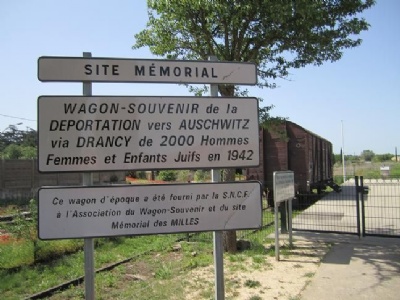Les Milles
About twenty kilometres north of Marseille, the French authorities set up in a former tile factory a detention camp for German and Austrian citizens who fled the Nazis when the latter came into power. They were seen as a national threat despite being opposed to Nazism and some were even Jews. Most were released in the spring of 1940, but when Germany attacked France in May 1940, about 2,000 German and Austrian citizens were arrested. When France surrendered in June 1940, Les Milles ended up in the free zone (Vichy). Opponents of the Vichy regime and Germany were then detained in the camp. In November 1940, the camp became a transit camp and a number of relief organizations, both Jewish and non-Jewish, were allowed to help prisoners emigrate.
In 1942, the French authorities agreed with the germans that about 10,000 Jewish refugees in France would be handed over to the germans and deported. The possibility of emigration disappeared and the camp was isolated and became an assembly point for Jews arrested in southern France. The first transport from Les Milles to the Drancy transit camp outside Paris departed on August 11. Until November 1942, about 2,000 Jews were deported from Les Milles to Drancy, and then on to Auschwitz. After the Germans occupied the free zone in november 1942, the Wehrmacht took over the camp. The remaining prisoners were sent to other camps. In total, there were about 10,000 prisoners from 27 countries in the camp during its existence. Several of whom were prominent cultural personalities.
Current status: Preserved with museum (2012).
Address: 40 Chemin de la Badesse, 13290 Aix-en-Provence.
Get there: Car.
Follow up in books: Weisberg, Richard H: Vichy Law and the Holocaust in France (1998).




Les Milles is completely preserved and thus the best preserved internment camp established in France during the Second World War. Monuments have been there for a long time, but the museum only opened in the summer of 2012. Unfortunality it had not yet open when I was there in the spring 2012.